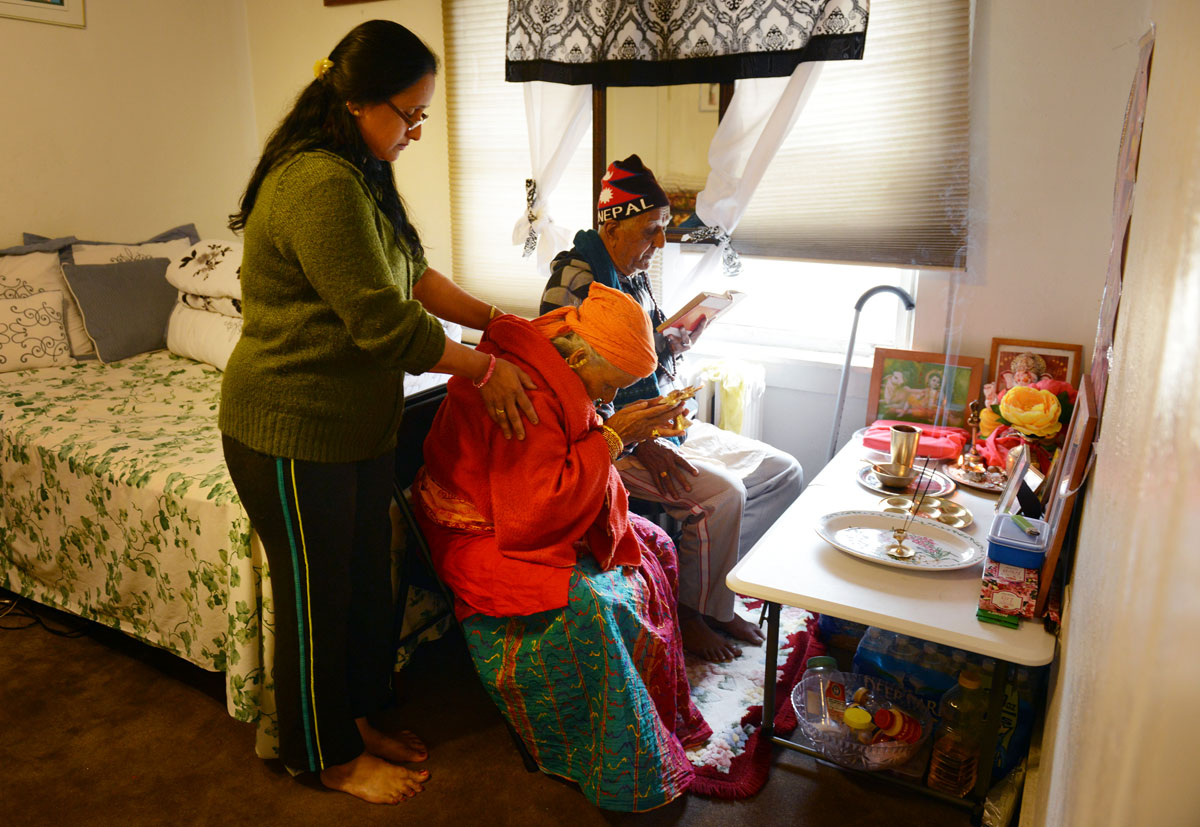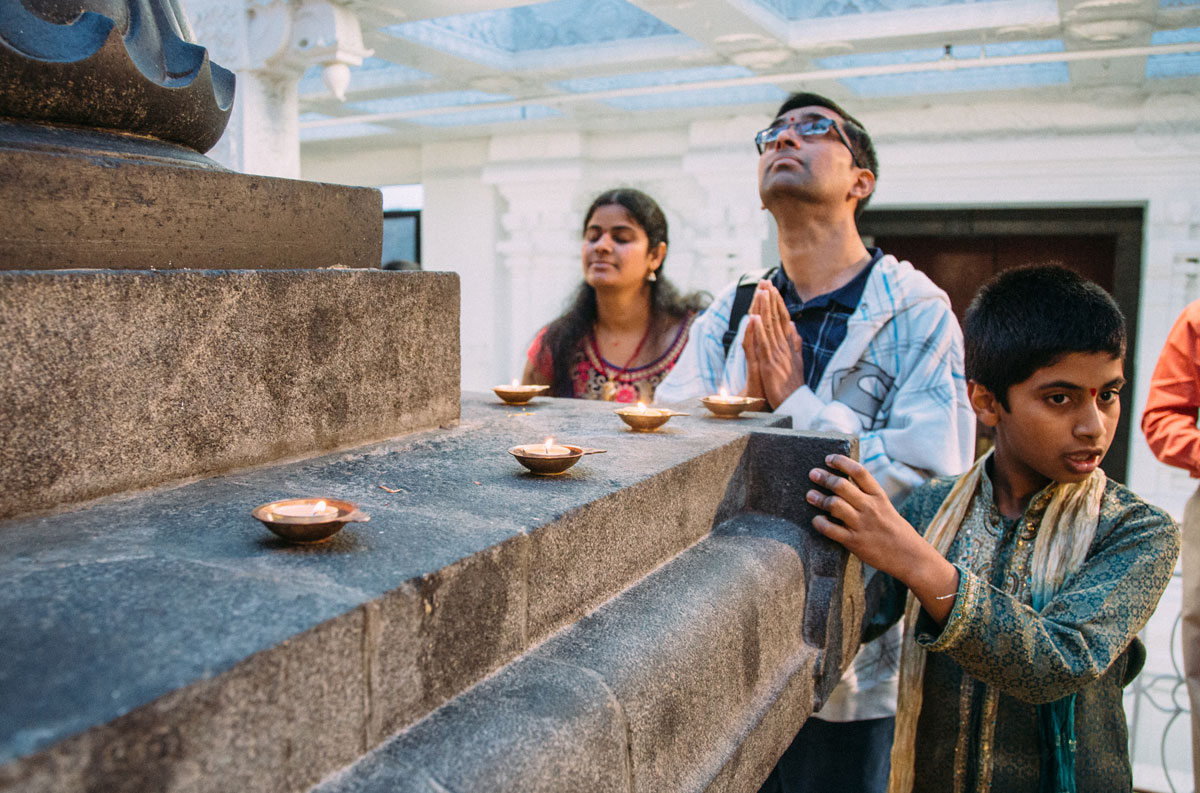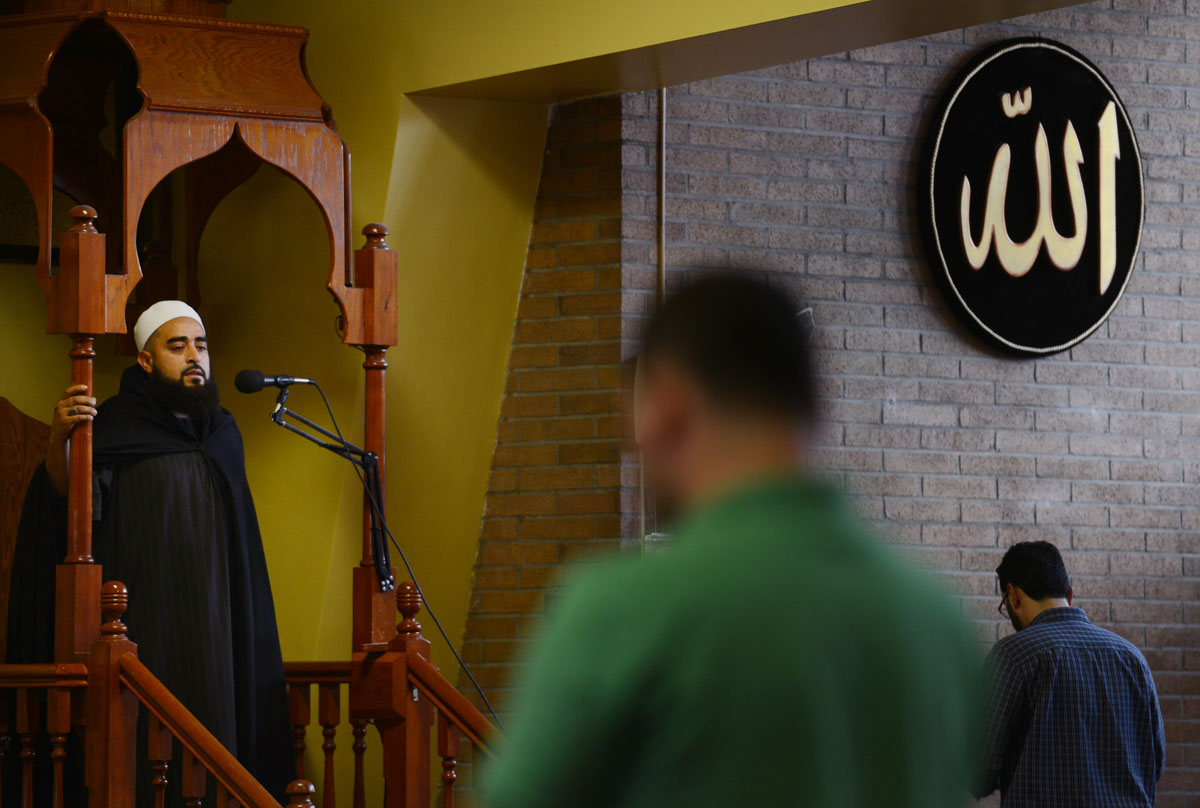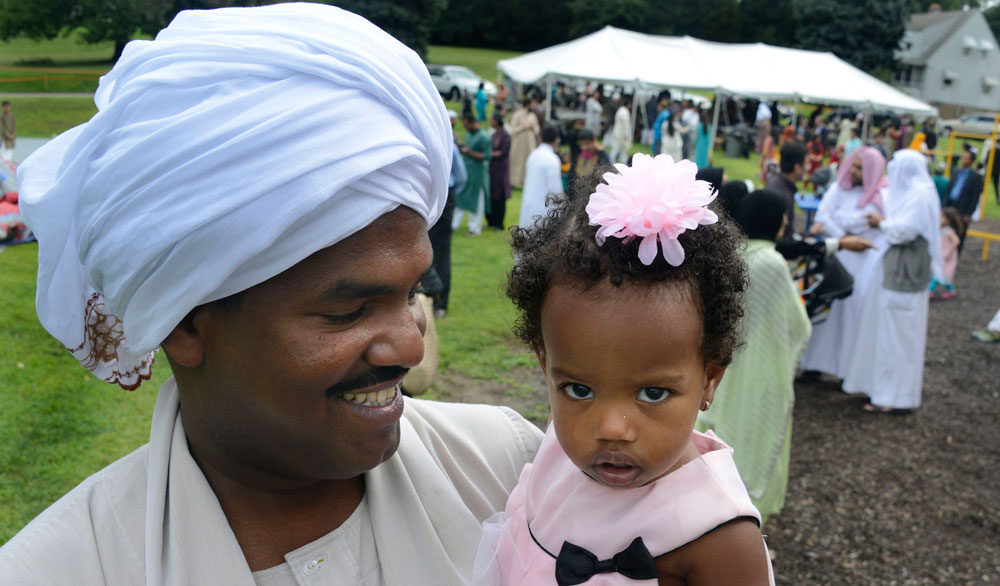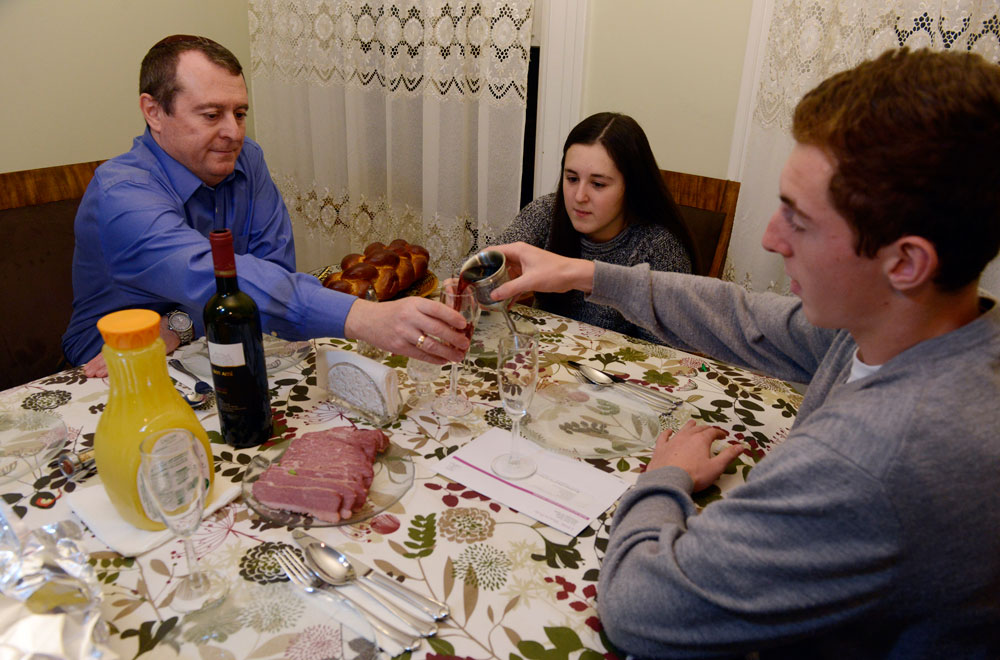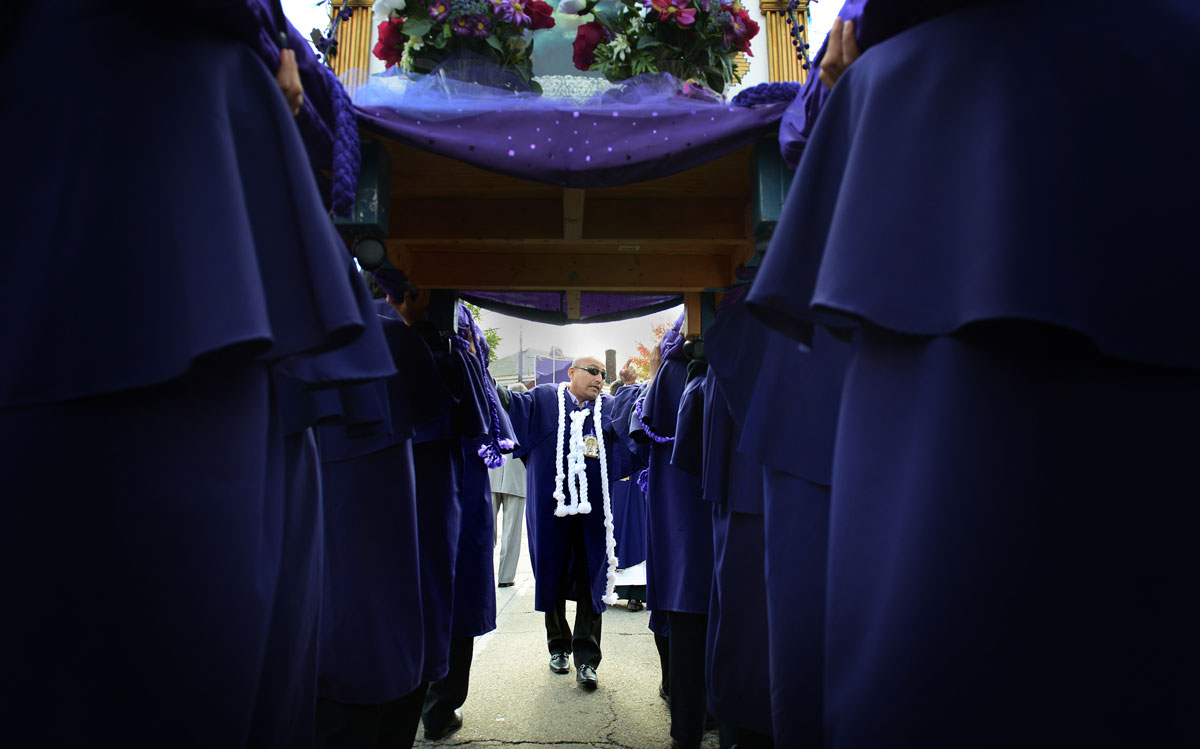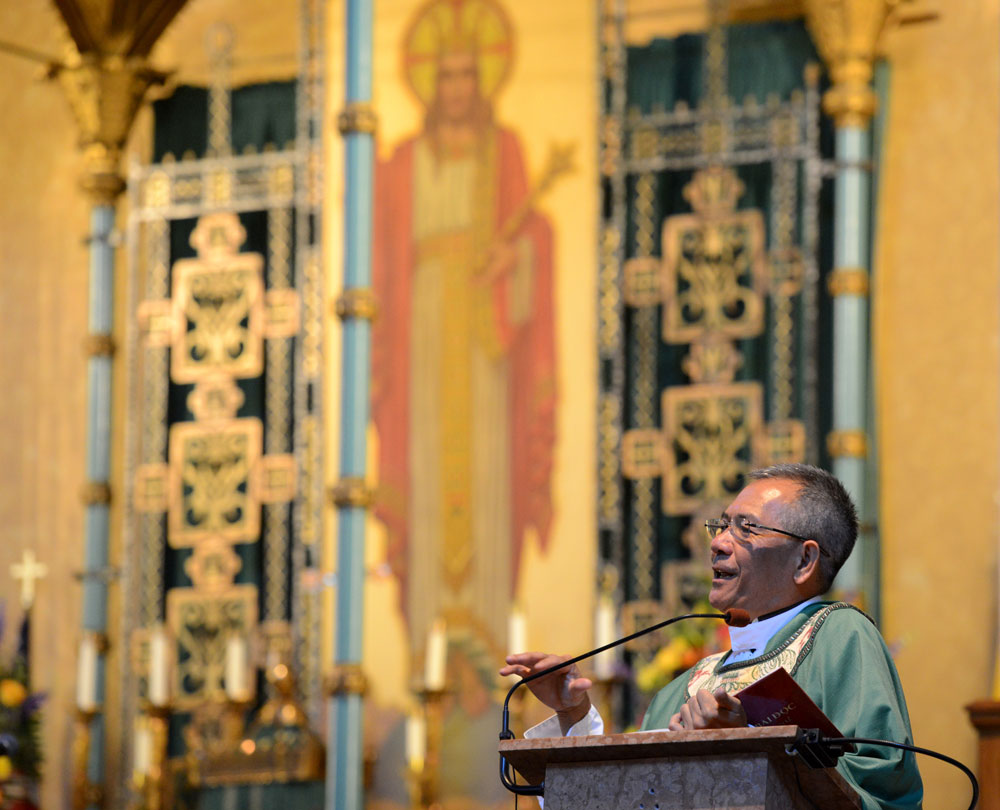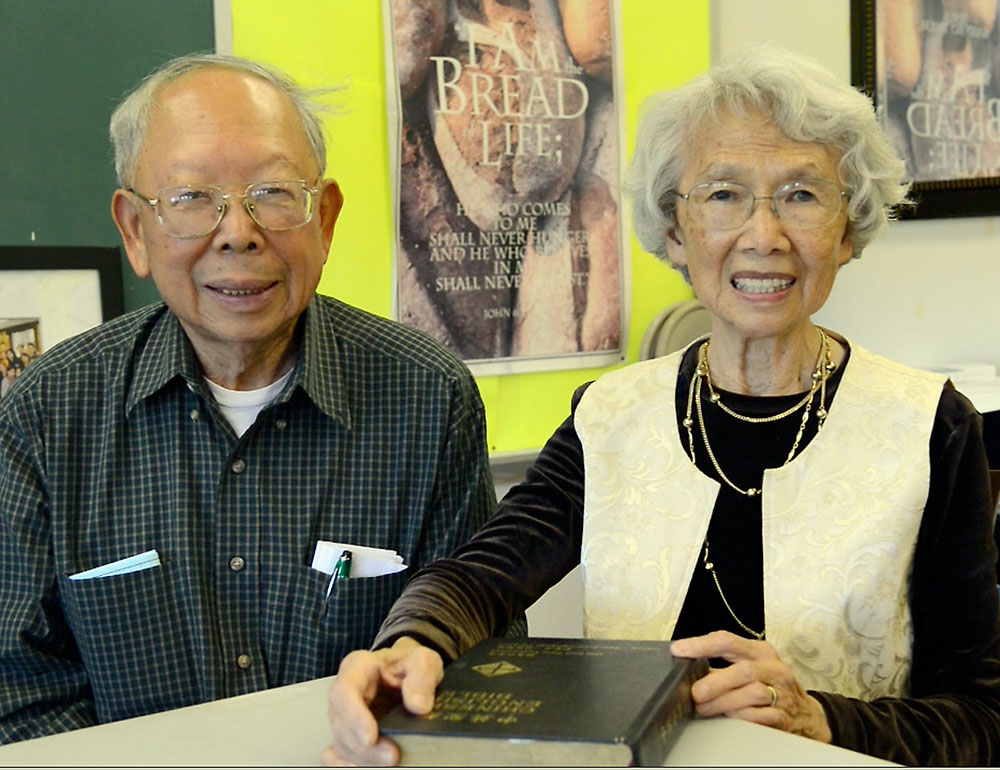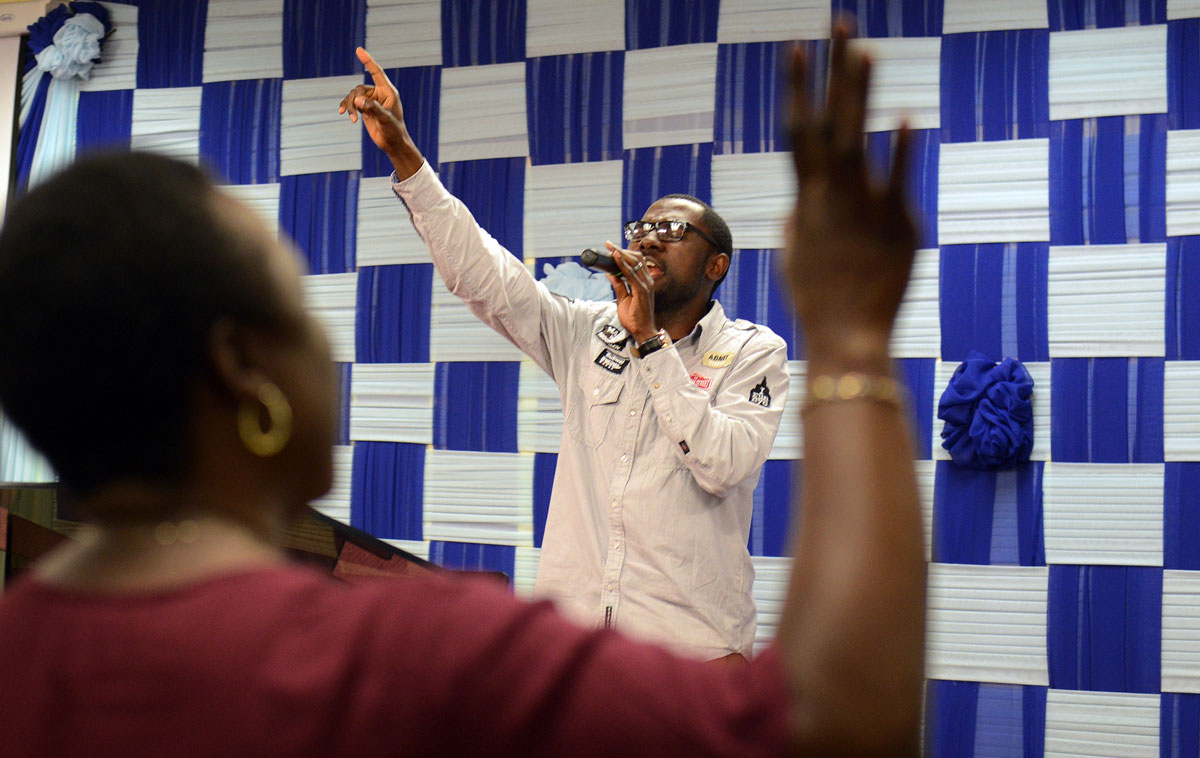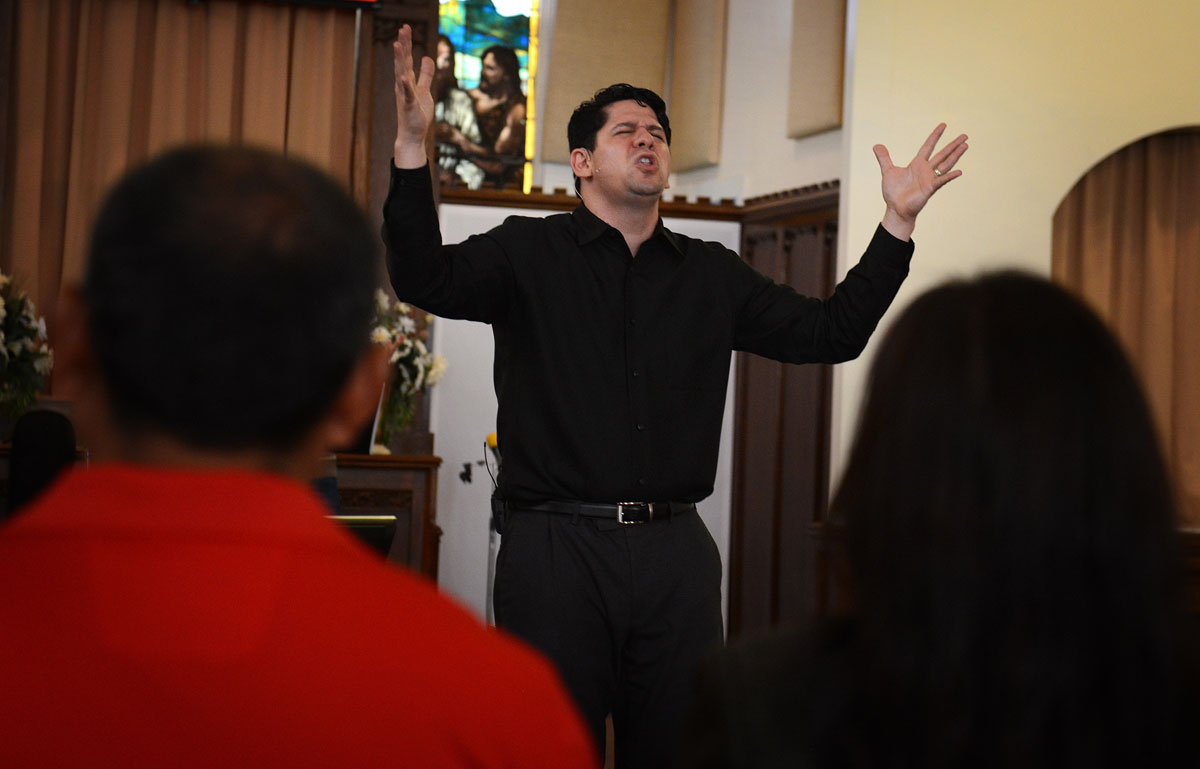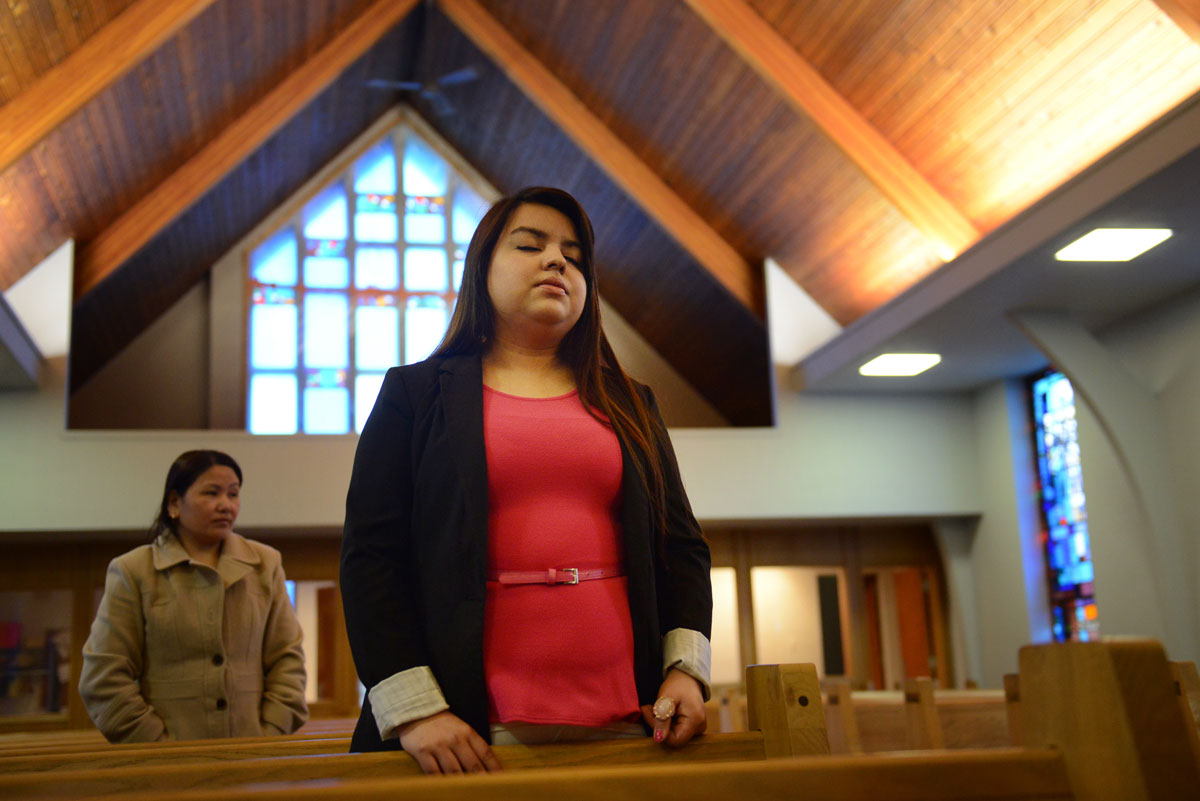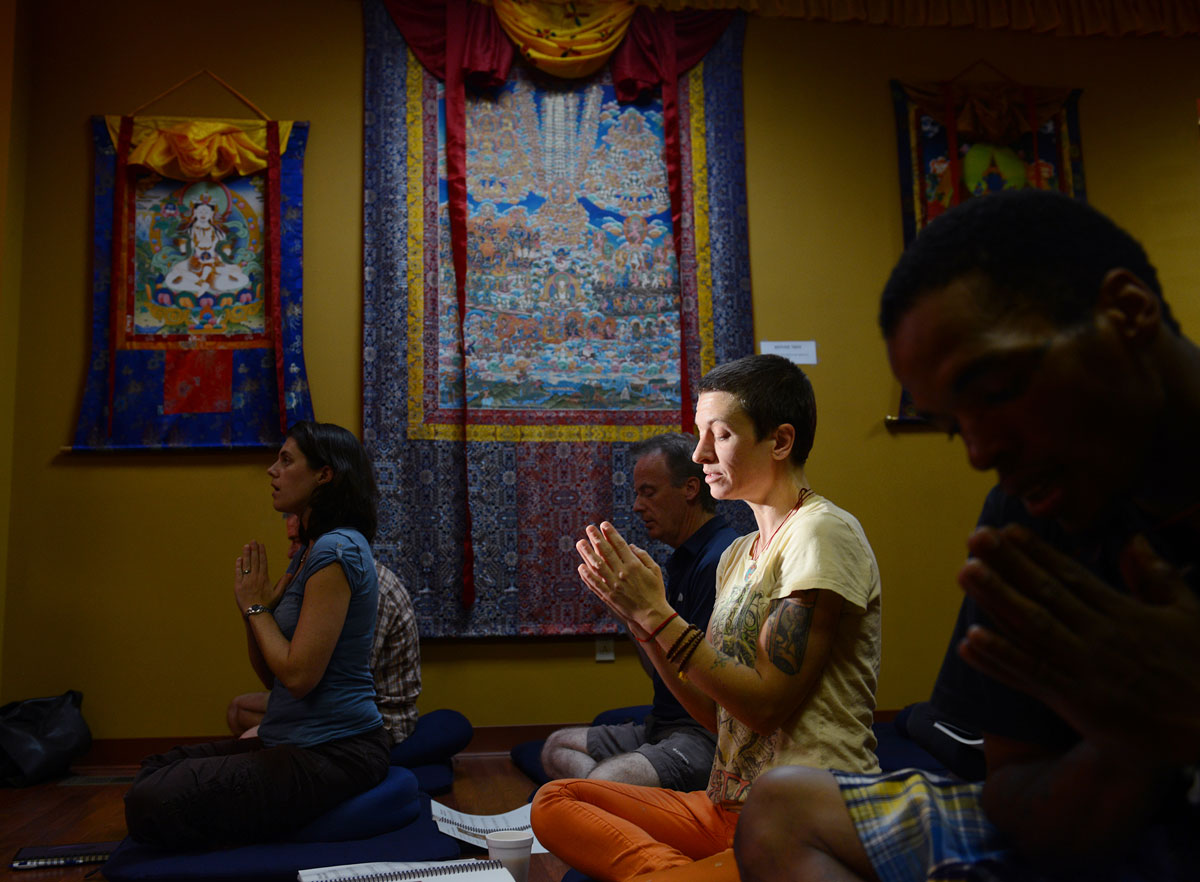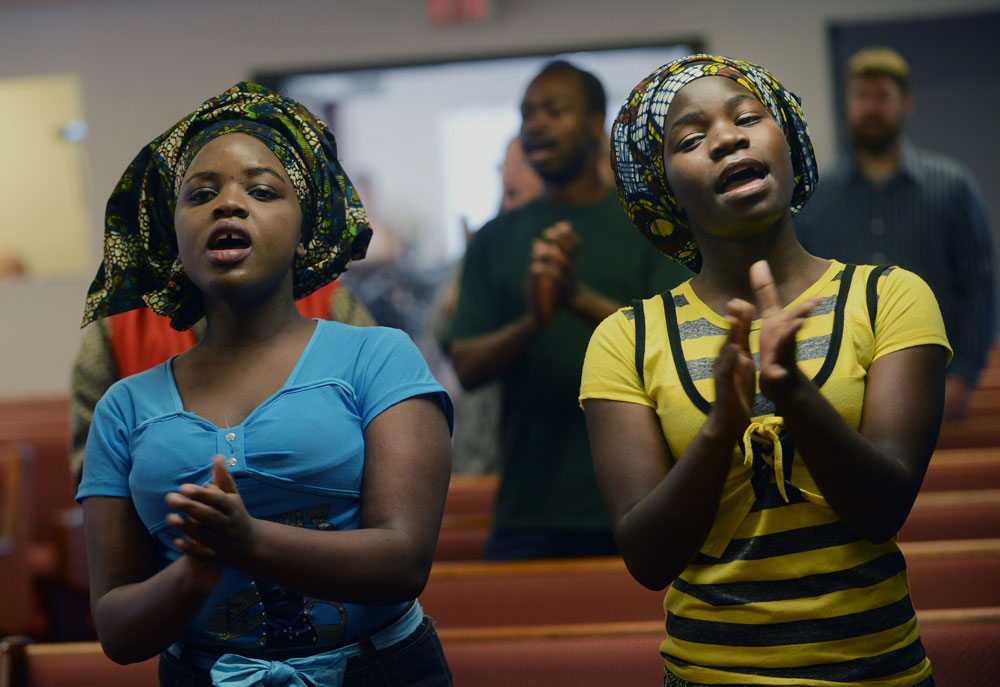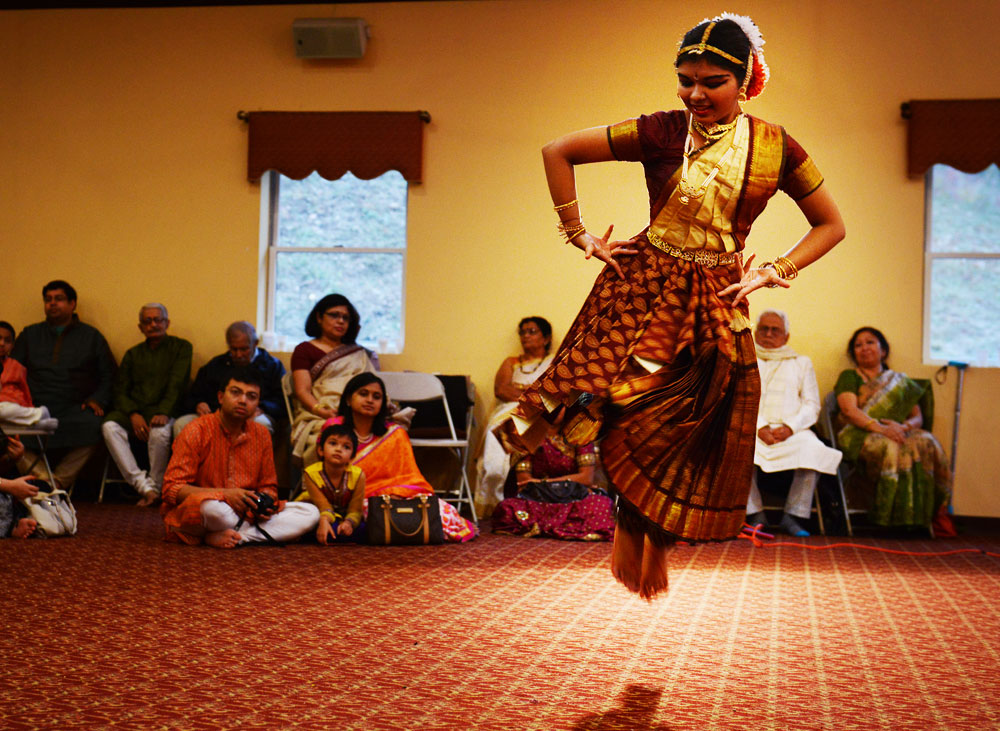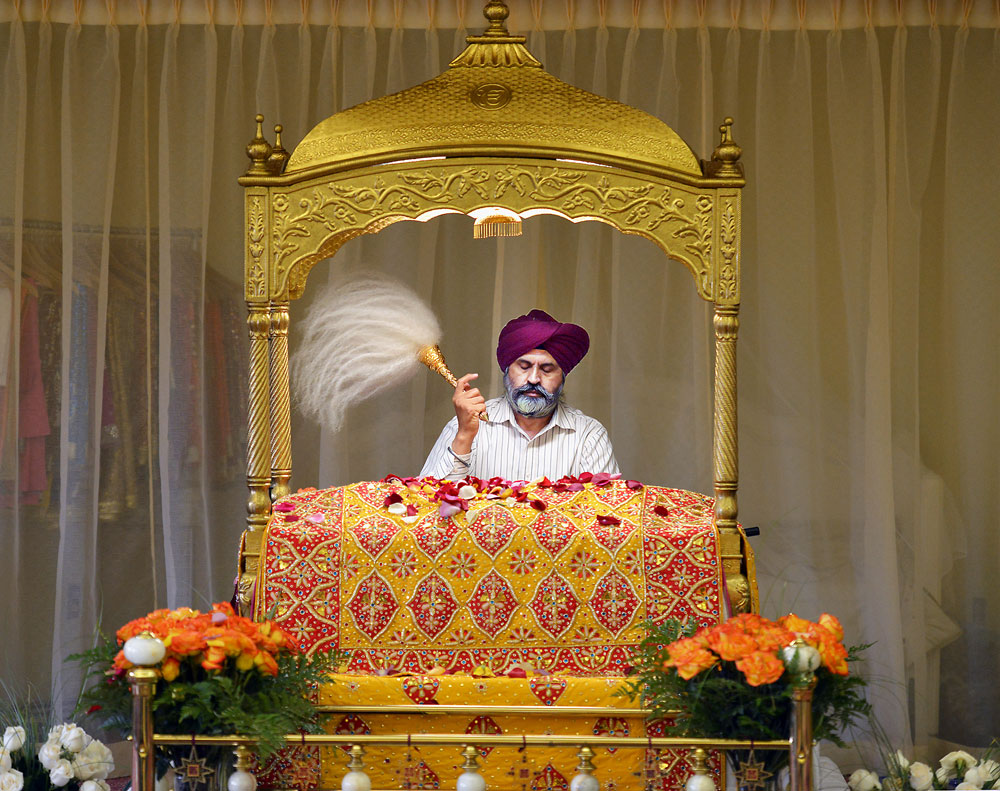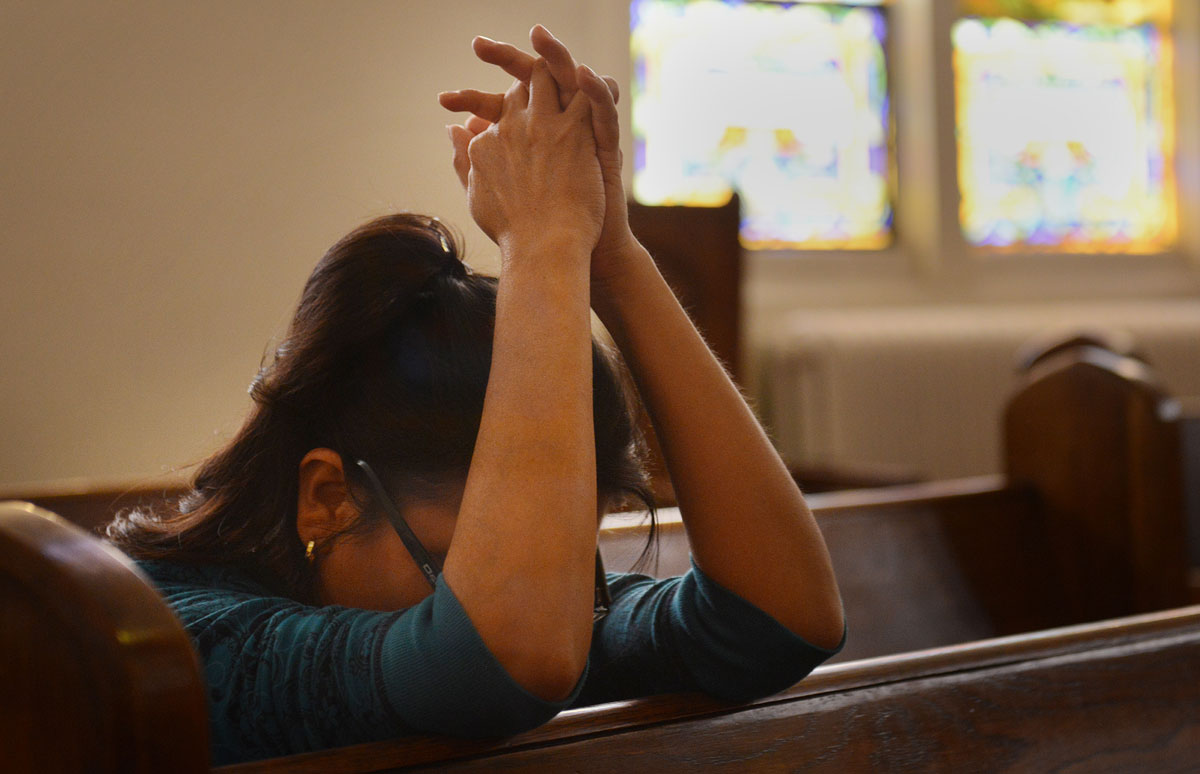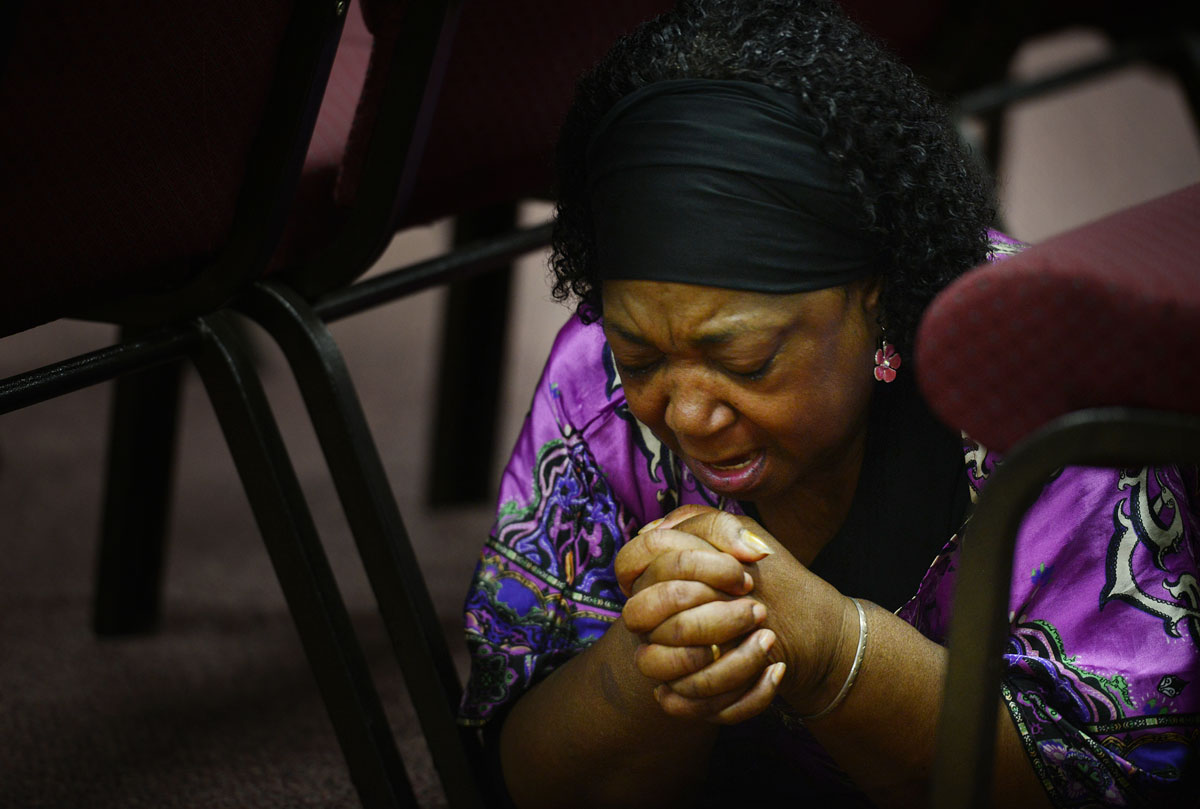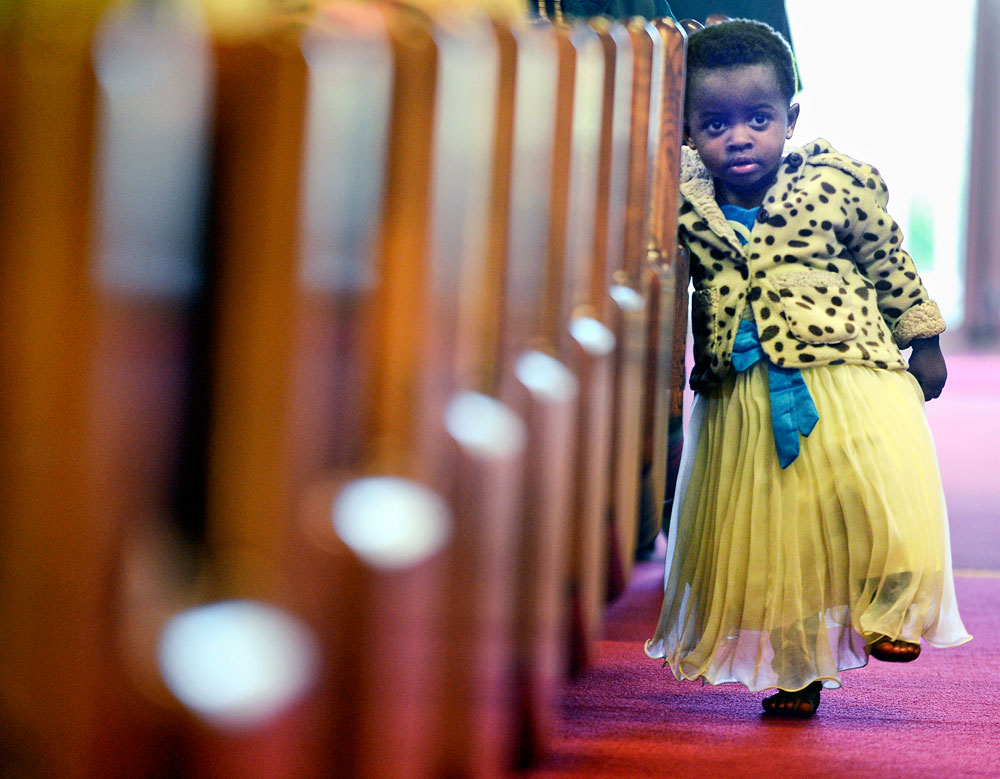Andrew Rush
Bob Donaldson
Nate Guidry
Pam Panchak
Robin Rombach
Darrell Sapp
Bill Wade
Julia Rendleman
Nate Guidry
Bob Donaldson
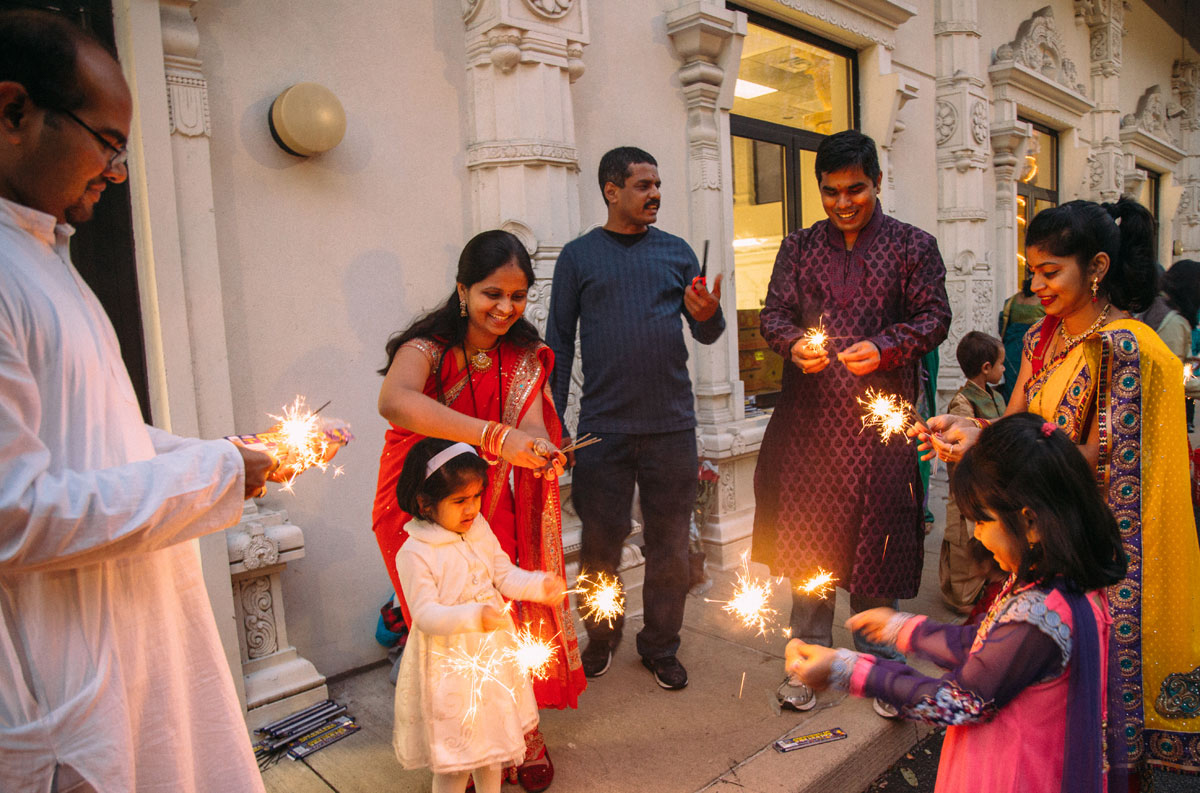
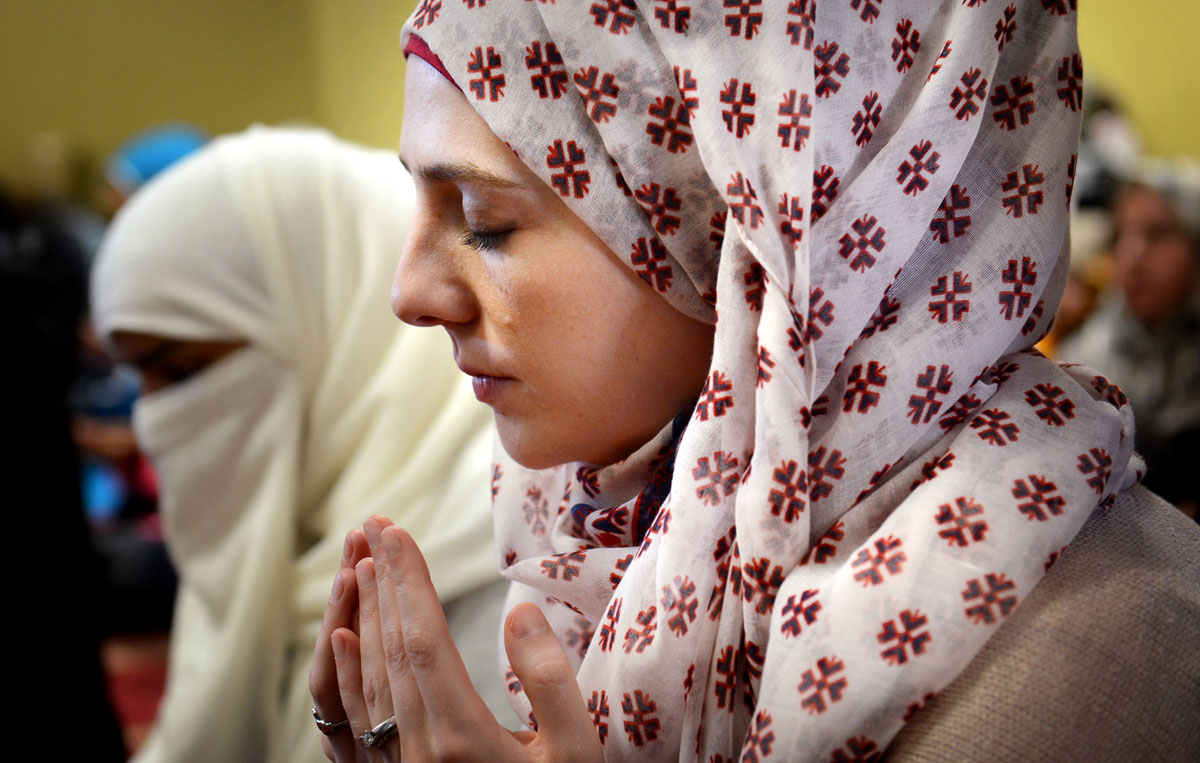

Hundreds of Indian-Americans gathered on a recent Sunday evening in the social hall next to the Hindu Jain Temple in Monroeville — many dressed in colorful saris or shalwar kameezes, others in Western clothing — all chatting, eating native foods and watching performances of song, poetry and millennium-old dances marking a festival dedicated to the goddess Durga’s triumph over evil.
Uphill in the quiet temple itself, Vijay Shah and his family came to offer a ceremonial scarf to the statue of Durga and to pray and prostrate themselves before the various shrines, which hold intricately carved idols of several deities surrounded by offerings of flowers, food and incense.
Afterward, Mr. Shah recalled how he came to Pittsburgh for a temporary work assignment more than 20 years ago. When his wife, Arti, joined him with their newborn daughter, she found the region more friendly and less frantic than where they had been living in New Jersey.
“My wife loved Pittsburgh so much she said, ‘Do what you have to do. We are not leaving Pittsburgh,’ ” recalled Mr. Shah, 48, of Upper St. Clair.
Central to the family’s life here is the temple — not just for religious reasons but also for the cultural and social support that has helped the Indian immigrants to assimilate while maintaining core traditions — and passing them on to their American-raised daughter, Avisha Shah.
“I can probably call 400 people here my family,” said Ms. Shah, 21, now a student at the University of Pennsylvania, who grew up attending festivals and other events with Indian-American families.
“They’ve got each other’s backs,” she said. “Having all kids see that and develop those relationships is one of the best parts of Pittsburgh.”
Such stories of spiritual, cultural and social cohesion are playing out throughout Pittsburgh’s immigrant populations.
Pittsburgh’s estimated 75,000 foreign-born citizens — ranging from the highly educated immigrants to refugees arriving with minimal literacy from the tortured lands of the globe — have started Hindu, Muslim, Buddhist, Baha’i and other faith congregations. The Sri Venkateswara Temple in Penn Hills, dedicated in 1976 to an incarnation of the deity Vishnu, is a landmark of the nation’s growing religious diversity, drawing pilgrims from distant cities as one of the first traditional Hindu temples built in North America.
Churches have absorbed immigrants from the fast-growing, youthful Christian populations of Latin America, Africa and Asia, and synagogues have received Jewish refugees from the former Soviet Union.
Congregations serve as both spiritual filling stations and all-purpose social networks for those seeking referrals for jobs and human services or just the experience of familiar languages and foods.
“This is my spiritual home, also my home away from home,” said Jane Chan of Pittsburgh Chinese Church in McCandless, where the Bethel Park resident has been a longtime member and volunteer. The independent Protestant church, with roots in 1930s Chinatown, has weekly services and classes in English, Mandarin and Cantonese, followed by a communal meal.
Ahmed Arafat of Brookline, an information technology worker who came here from Gaza in 1999 to study at the University of Pittsburgh, got involved at the Islamic Community of Pittsburgh in Oakland, soon after his arrival. “It’s been my center for the last 15 years,” he said.
Storefronts to cathedrals
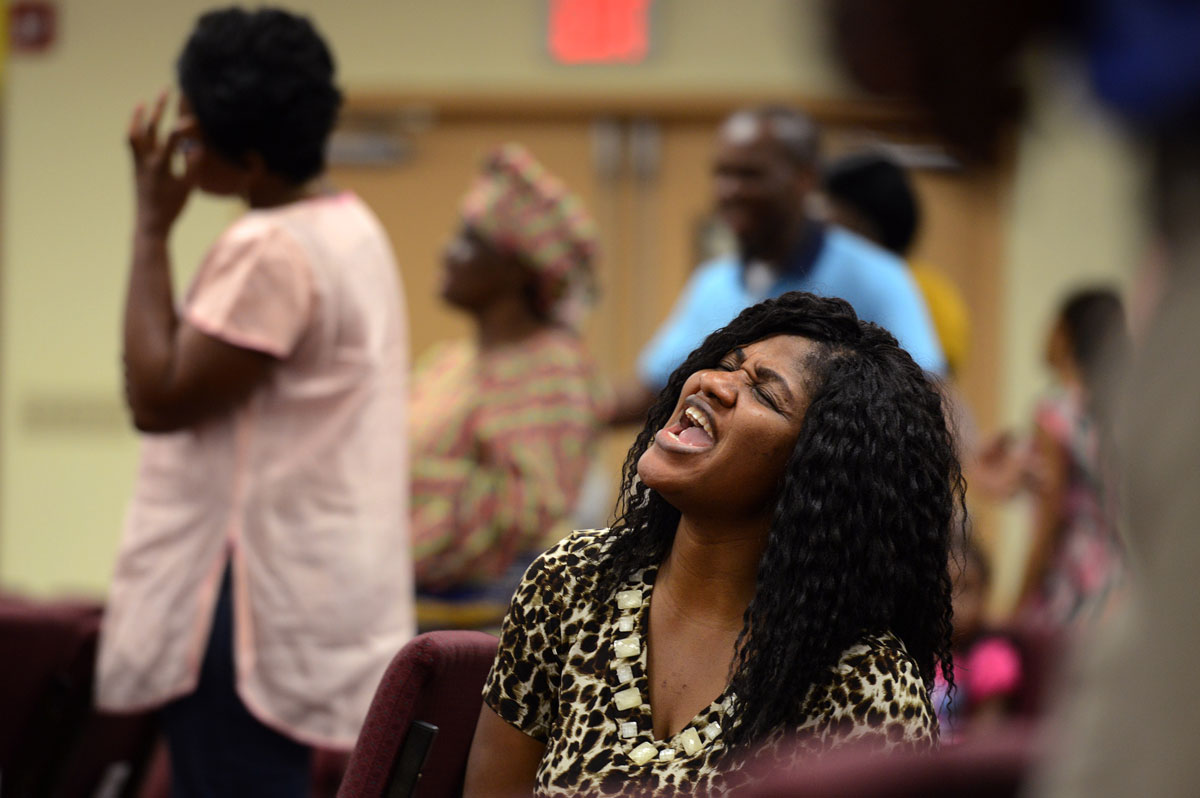
Pittsburgh’s changing religious landscape has been evident in visits by the Post-Gazette to more than 20 congregations, worship services and faith-based service organizations serving immigrant populations:
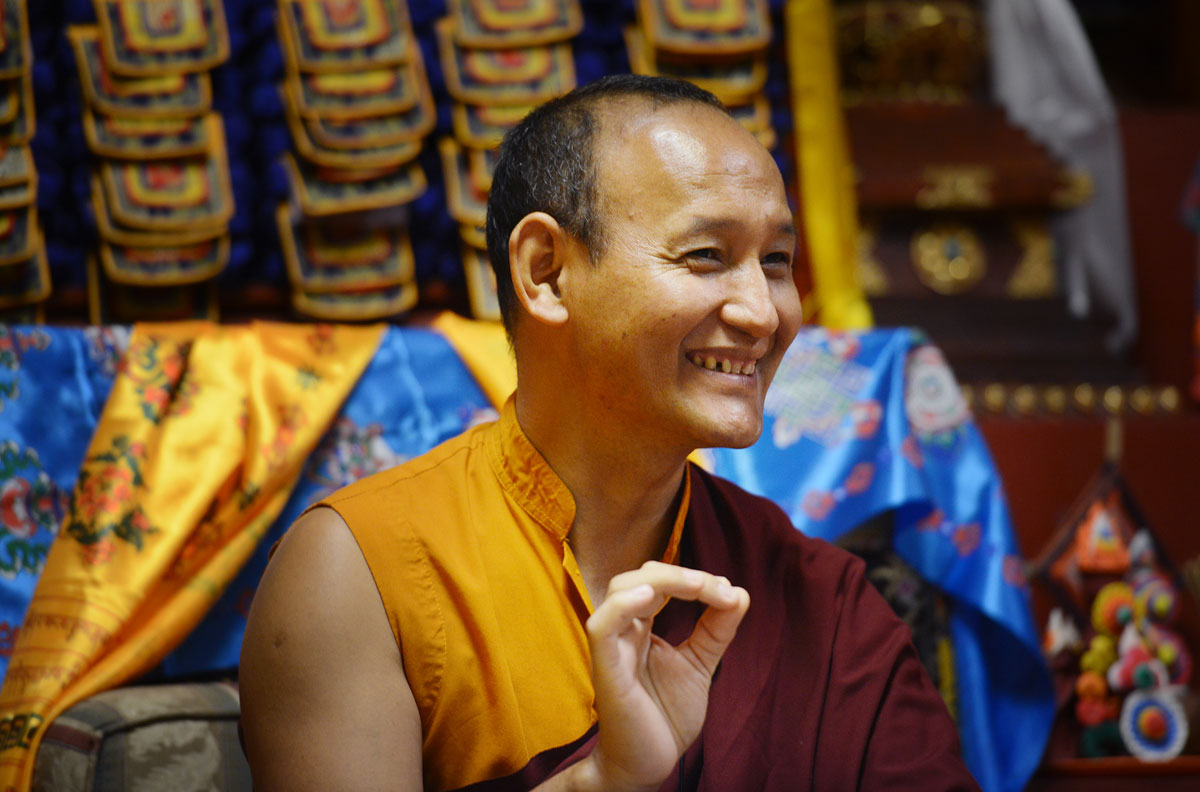
Pittsburgh’s changing religious landscape has been evident in visits by the Post-Gazette to more than 20 congregations, worship services and faith-based service organizations serving immigrant populations:
- At a historic St. Stanislaus Kostka Church in the Strip District, amid displays of Polish icons and prayer cards reflecting its immigrant founders, a bride and groom pray at a side altar to the Virgin Mary after a bilingual wedding — in English and Vietnamese.
- In a carpeted former Presbyterian sanctuary in downtown Carnegie, rows of Muslims from many nationalities kneel and prostrate amid Arabic prayers at a Friday service.
- At a Pentecostal church in a former auto parts warehouse in Wilkinsburg, immigrants from West Africa and a few Americans bob and sway, raise their arms and sing exuberant worship choruses: “I’ve never seen your kind-oh, this kind God- oh!”
- At a makeshift temple in the storage room of a Carrick grocery store, refugee priests from Bhutan chant in Sanskrit and prepare a small fire offering in honor of the Hindu goddess Durga.
- At a modest Greenfield storefront, a dozen mostly American-born participants recite an ancient Buddhist chant, sit silently on meditation cushions and hear a teaching from a Tibetan lama.
- On the streets of Oakland, Spanish-speaking Catholics process with a painting of the crucified Christ, re-enacting a centuries-old Peruvian tradition in honor of Senor de los Milagros, “Lord of the Miracles.”
The marchers were from St. Regis Church, which has English and Spanish Masses, the latter drawing hundreds of Latino immigrants from throughout the region.
“It’s not that I need a Mass in Spanish, because I was able to speak English from the beginning, but having people you get to know from the same country, same customs, same community was really nice,” said Rebeca Dosal, 47, a native of Mexico now living in Squirrel Hill and active at St. Regis. “I just love it.”
More than 100 children, mostly Hispanic, now take part in a religious education program that only recently had an enrollment of eight, said the Rev. Daniele Vallecorsa, the multilingual pastor of St. Regis.
All this “has brought a revitalization of the parish,” he said. “Seeing large numbers in church excites people even in the Anglo population.”
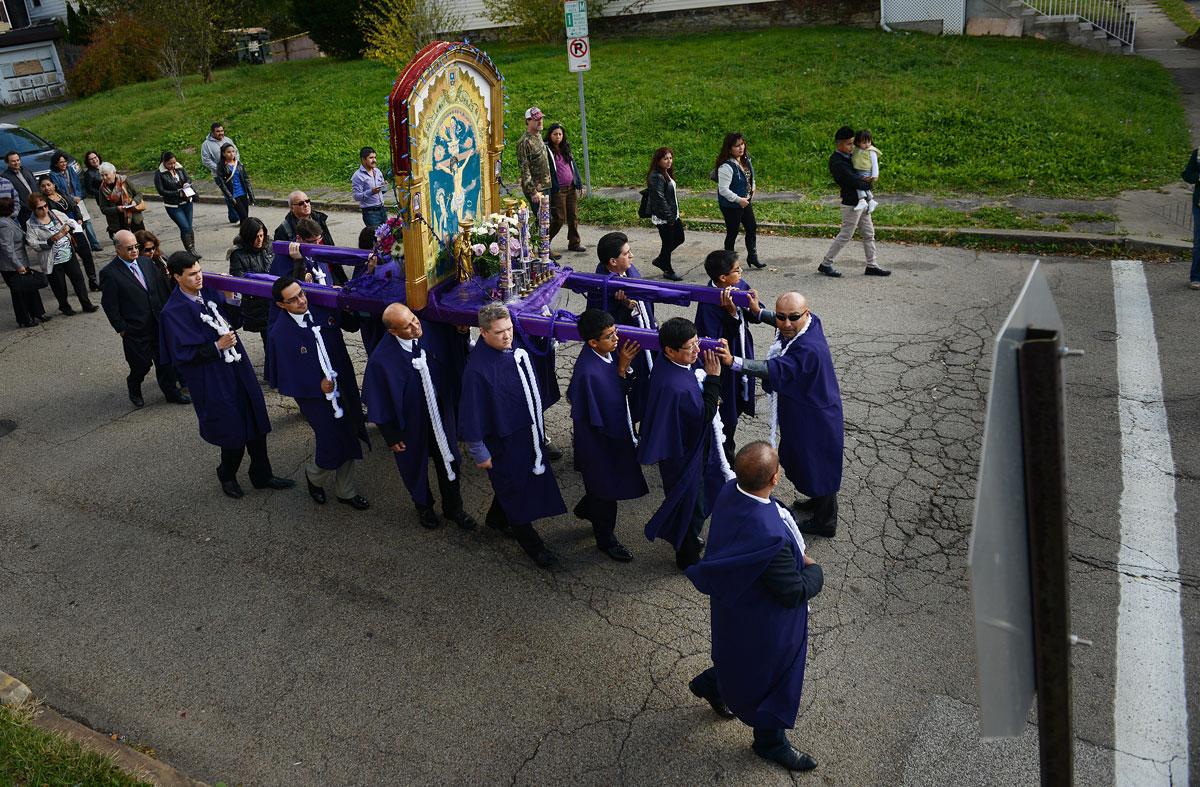
Interfaith response
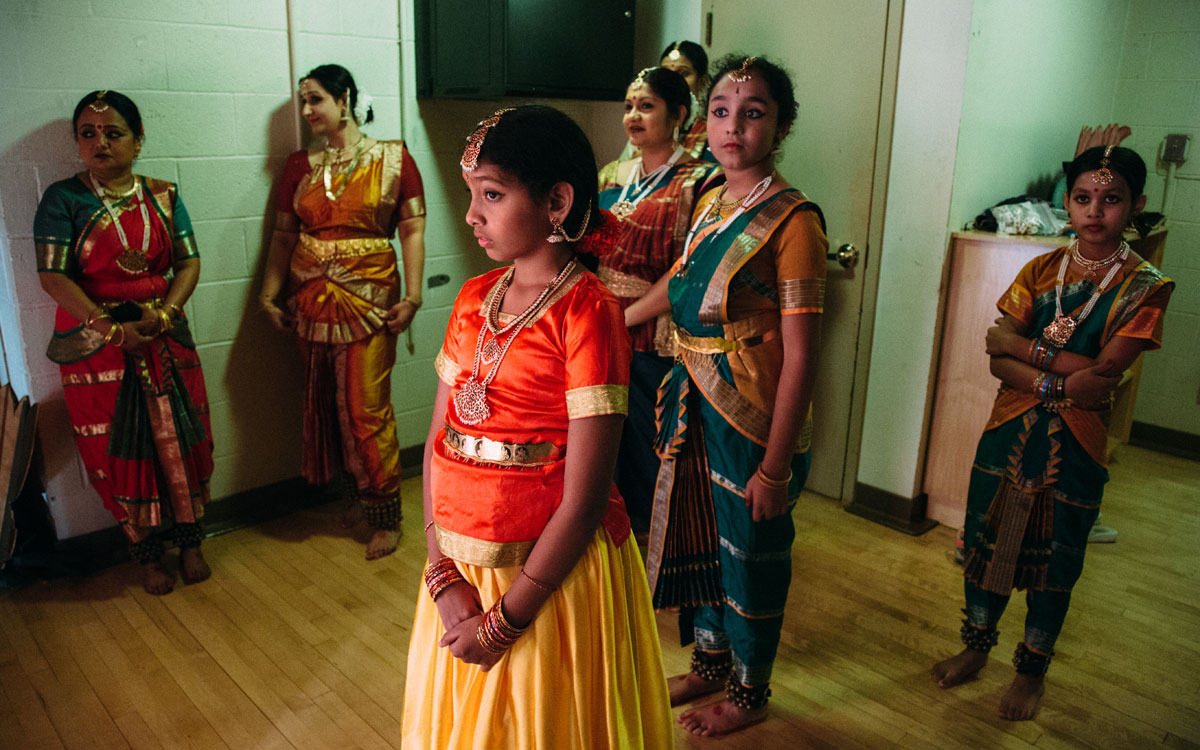
That influx of youth is one of the common characteristics of the otherwise diverse array of immigrant faith groups. U.S. populations of Hindus and Muslims, who are largely immigrants, and Hispanics, a third of whom are foreign-born and most of whom identify as Christian, are younger than the national average, according to the Pew Research Center.
Coming up with precise numbers for Pittsburgh’s immigrant religion is difficult, given their diverse and decentralized structures. A 2010 survey estimated more than 11,000 Hindus, 7,000 Muslims and 1,700 Buddhists in Allegheny and six surrounding counties, although it did not determine how many were foreign-born, according to the Association of Statisticians of American Religious Bodies.
The Catholic Diocese of Pittsburgh has regular Masses in Korean and Vietnamese in addition to Spanish, while anecdotes abound of Protestant services in Spanish, Swahili, Burmese, Korean, Vietnamese and other languages.
The influx of refugees and immigrants has also brought a response by faith-based institutions, such as Catholic Charities, Jewish Family & Children's Service, Casa San Jose, South Hills Interfaith Ministries and AJAPO (Acculturation for Justice, Access and Peace Outreach). They, as well as non-sectarian charities, are active in helping foreign-born arrivals learn English and gain legal status, driver’s licenses, medical care and jobs.
“I do this because God calls me to do this,” said Sister Janice Vanderneck, Roman Catholic Sister of St. Joseph and director of Casa San Jose, based at St. Mark’s Evangelical Lutheran Church in Brookline amid a growing South Hills Hispanic population.
Several groups are also working to build interfaith relations. While many praise the region for religious tolerance, attributed partly to the broadening influence of its many colleges and universities, they say it’s important to be vigilant against religious prejudice.
Anne Wirth, of the newly formed Greater Pittsburgh Interfaith Coalition, said public talks and discussions about differing religions can help in facing problems that range from stereotyping and mistrust to proselytizing and language barriers.
“When people of different faiths and cultures share food, their own life stories, as well as working on common projects for their community, I think we will be well on our way to addressing many of the challenges,” she said. “Realistically, there will still be challenges that will take time, and some challenges for some people will never be resolved.”
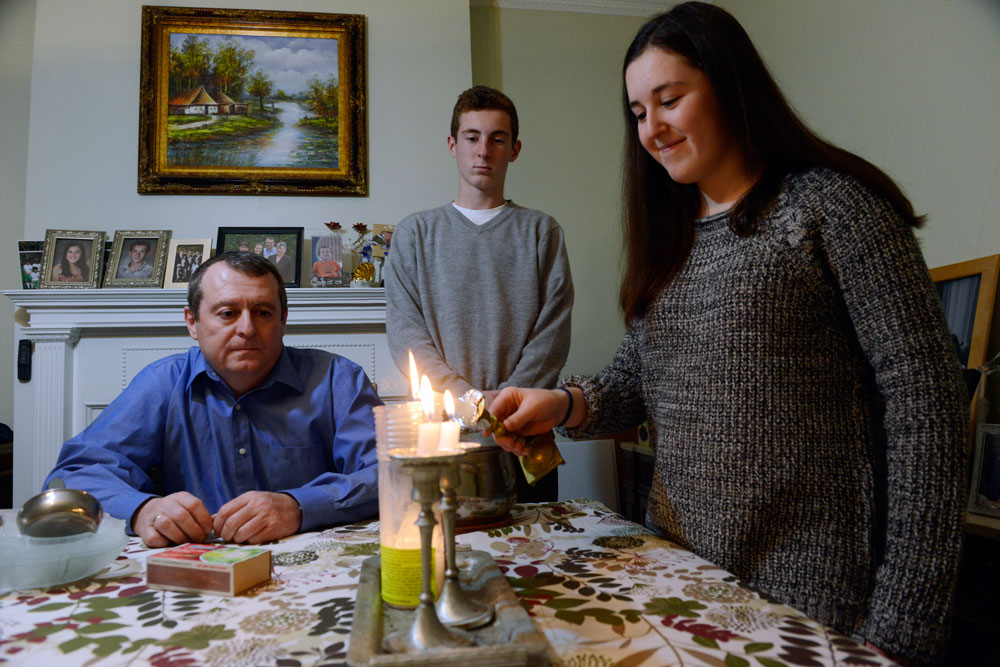
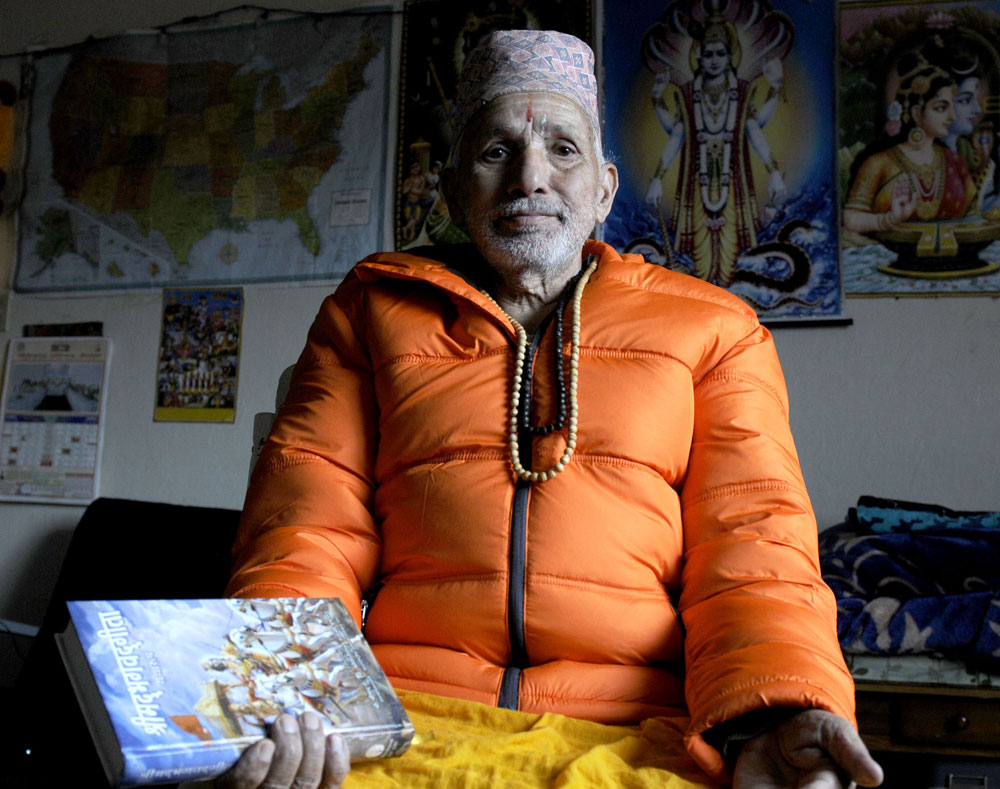
Strong faith, but not universal
Religious faith is far from universal in the foreign-born population, which is affected by the same secularizing trends affecting the rest of the U.S. populace. Recent nationwide surveys, for example, have found that half of Chinese-Americans identified with no religion, as did roughly one-fifth of those of Hispanic, Vietnamese and Korean ancestry.
Many Jews who came as refugees from the former Soviet Union, where religion was forcefully repressed, arrived with little knowledge of Judaism. Some, however, have gradually found their way into religious observances.
For Arthur Udler, that involvement came gradually through contacts with rabbis and his children’s Jewish schools. “It was always important for me to be what I was meant to be, and I feel absolutely confident this is supposed to be this way,” said Mr. Udler, 57, of Squirrel Hill.
Many foreign-born residents, particularly those fleeing harrowing circumstances, arrived with their religion and little else.
“The bottom line is, practically all refugees come with a faith. It’s always really strong,” said Yinka Aganga Williams, executive director of AJAPO, a refugee resettlement and service agency based at the former St. Benedict the Moor Catholic School building in the Hill District.
Dasarathi Nepal, an 80-year-old refugee and Hindu priest, is trying to help thousands of his fellow Bhutanese Nepali refugees transplant their traditions here after they were driven out by the Bhutanese majority, partly over religious and cultural differences. “To be a priest is to protect one’s religion and culture,” he said through a translator.
Long history of immigrant religion
Pittsburgh has received several waves of immigrant religion, from the early Scots-Irish Presbyterians and German Protestants in the 18th century to later Jewish immigrants from German and Russian lands.
The demand for labor in mines and mills drew an influx from Eastern Europe and Mediterranean lands, their church spires and onion domes still sharing skylines with defunct blast furnaces and smokestacks.
A 1913 directory for the Catholic Diocese of Pittsburgh listed McKeesport as home to Polish, Hungarian, Italian, Ruthenian and “Slavish” parishes – not counting ethnic Orthodox and Protestant churches. Nearby Homestead had “a sacred density to rival Rome and Jerusalem,” University of Pittsburgh architectural historian Franklin Toker wrote in his 2009 book, “Pittsburgh: A New Portrait.”
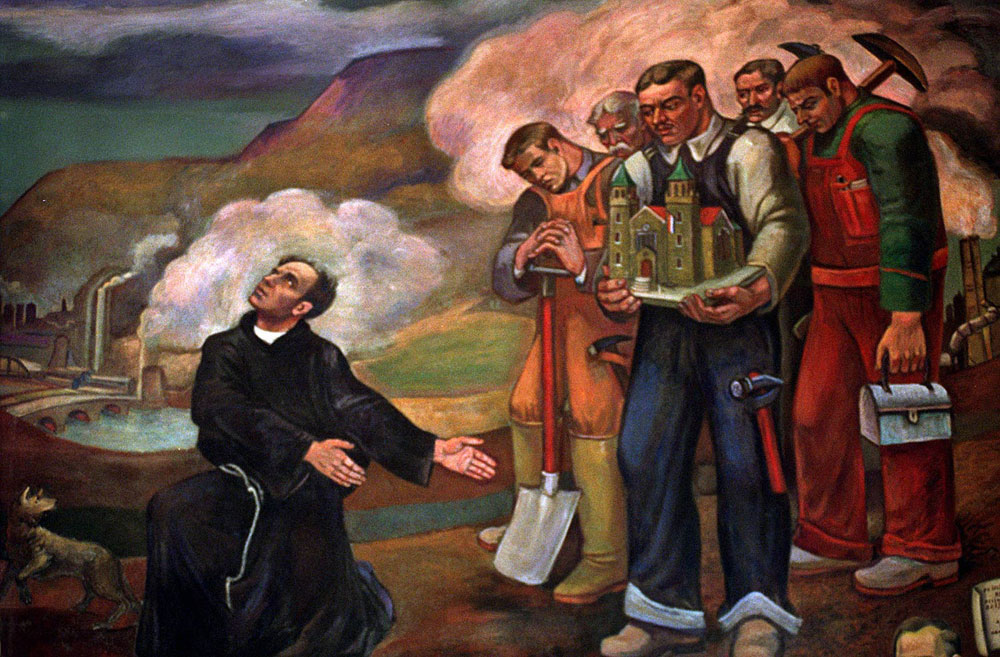
Yet a 1958 publication of the Committee on Religion for Pittsburgh’s Bicentennial Association contained only two religious symbols on its cover – a cross and a Star of David. It said the region it hosts “all the major religious faiths — Catholic, Protestant, Jewish, Eastern Orthodox.”
Today, one can still attend the occasional polka Mass and ethnic-heritage fair at some of these churches, and some are receiving new influxes of Eastern European immigrants. But most ethnic parishes were stirred into the American melting pot, if not closed following the population losses amid the steel industry’s collapse.
Meanwhile, the notion of “all the major religious faiths” would broaden.
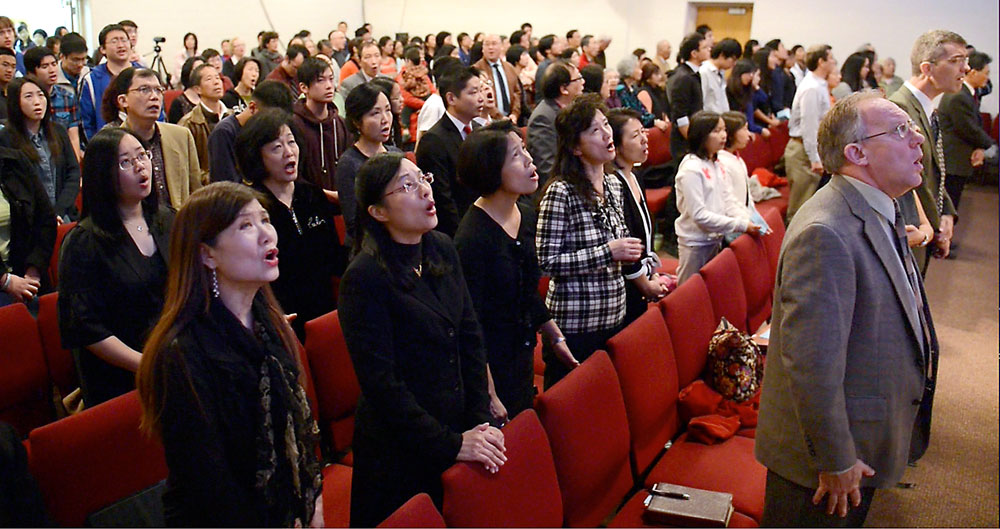
After historic legislation in 1965 ended discriminatory U.S. immigration policies, skilled immigrants from Asia and elsewhere were drawn to Pittsburgh’s universities, medical centers and corporations. Their ranks have swelled with small but significant Hispanic immigration and an influx of refugees of war and exile from Bhutan, Burma, Somalia and elsewhere.
While immigrant congregations can be found throughout the region, a modern “sacred density” can be found in the eastern suburbs of Monroeville and Penn Hills, now home to multiple Hindu centers, a mosque, a Sikh gurdwara and ethnic churches.
But immigrants and refugees also face the challenge of passing on their faiths to children growing up in a vastly different context than their foreign-born parents and clergy. Many congregations have launched Sunday schools and summer camps.
Pittsburgh Chinese Church, is working to “reach the second generation with English ministry” and to “not see them as secondary,” said Pastor Benjamin Lee.
But it’s harder to pass on the faith if the parents themselves, many of them working weekend shifts in health-care and other fields, can’t get there. A 2011 Princeton University study found that immigrants overall attended worship less frequently than they did in their homelands.
“It’s got to do with trying to survive in this country,” said Ms. Williams, of AJAPO. Many refugees and poorer immigrants have to take work when they can get it, posing the question: “How do we become part of that system without losing faith?”



Indians make their mark on Pittsburgh's religious scene
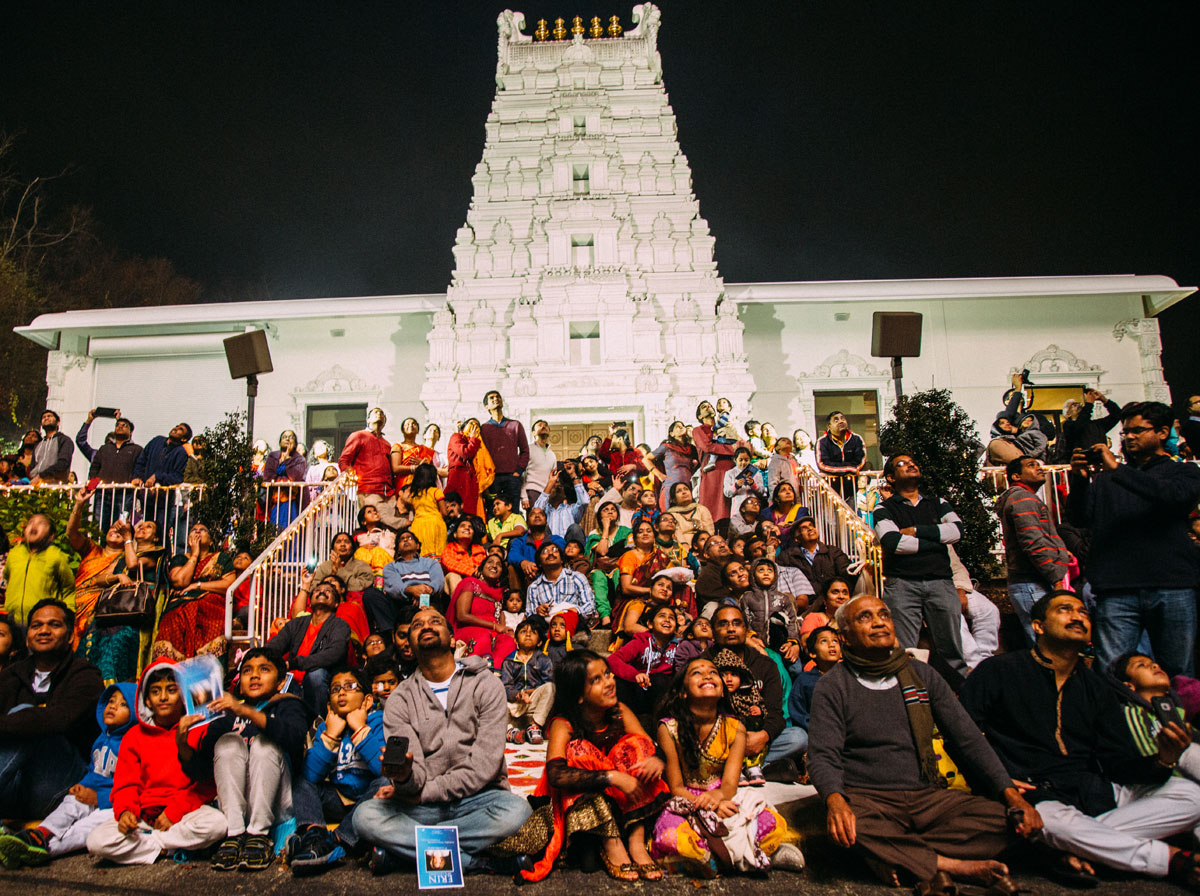
Seated in front of the floodlit, intricately sculpted façade of their Hindu temple in Penn Hills, hundreds of people looked into the October night sky, their faces glowing with the colors of fireworks bursting overhead to mark Diwali, a sacred festival of lights marking a god's victory over darkness and ignorance.
People travel from across North America to make pilgrimages to the Sri Venkateswara Temple.
Built in the mid-1970s and based on a much larger shrine in South India, the Pittsburgh version is renowned for its pioneering role in recreating on American soil the architectural grandeur and sacred sense of a major shrine in Hinduism’s native land.
Being able to make the regular trip there from his home in the Sewickley area is so important to Srini Bellamkonda that the software engineer -- who was transferred by his company to the United States from his native India in 2001 and came to Pittsburgh in 2004 -- hasn’t sought transfers anywhere else since.
In fact, he knows of fellow Indian immigrants who left Pittsburgh for jobs in Texas or Florida -- only to return.
“This is important to us, definitely,” said Mr. Bellamkonda, 40, after he helped a neighbor’s young son light a sparkler to celebrate Diwali. “They might not like the weather so much [but] the temple is one reason why people want to stick to Pittsburgh.
Of all Pittsburgh’s immigrant groups, its 10,000-strong Indian community has made the most visible imprint on the city’s diverse religious scene. Many immigrated since the 1960s to work as engineers in corporations such as Westinghouse and in the city’s academic and medical centers.
Indian-Americans have organized two major Hindu temples and other smaller Hindu institutions, as well as a Jain shrine, a Sikh temple and small Christian congregations, including a Catholic group worshiping in the ancient Syro-Malabar tradition. Muslim immigrants from India are also active in the region’s mosques.
Earlier in the Diwali festival at the Sri Venkateswara Temple, that religion’s full, sensory worship experience was much in evidence. Priests chanted in urgent tones to the backdrop of bells, drumbeats and declamatory notes from wind instruments known as nadaswarams.
Worshipers prayed before the idol of the deity to whom the temple is dedicated — Sri (Lord) Venkateswara, an incarnation of Vishnu, surrounded by consorts Lakshmi and Bhoodevi, goddesses of wealth and the earth. The deities were surrounded by such gifts as floral garlands, mango leaves and rice.
From the temple’s modest origins, “it’s grown, grown and we have a lot of devotees from all over the country now,” current temple Chairman Ashok Sarpeskar said.
In Monroeville, a few miles from the Sri Venkateswara Temple, the Hindu Jain Temple features elaborate turrets and other architectural flourishes.
Inside are five major shrines to deities primarily venerated in northern India, one of them especially by Jains, followers of a religion historically connected to but distinct from Hinduism.
Young people learn Hindu basics at temple Sunday schools and a summer camp.
“When we were young we never asked why,” said Indian native Vijay Shah of Upper St. Clair, who is active in the Hindu Jain Temple. “Today we have to explain, ’What’s the significance of this god? Why do I put a dot on my forehead?’ There is more value in that.”
Closely overlapping with the role of the temples are various Indian ethnic associations and educational institutions teaching classical Indian dance.
“I feel like I've learned a lot about Indian culture and heritage by learning to dance,” said Anika Roy, 16, of Monroeville at a Bengali Association of Greater Pittsburgh festival at the Hindu Jain Temple, where she performed an elaborate, ancient choreography depicting the goddess Durga’s triumph over evil.
The Pittsburgh Sikh Gurdwara was formed in the 1970s, also in Monroeville, by followers of the monotheistic religion, which emerged in India in the 15th century with distinct Scriptures, worship and traditions of dress.
Indian religious leaders say they have been involved in interfaith efforts and find the climate generally friendly despite isolated incidents of prejudice. But national events, such as a massacre committed by a lone gunman at a Wisconsin Sikh temple in 2012, have prompted heightened security and educational efforts, such as giving temple tours and speaking to school and church groups.
“We need to work a little more on telling people who we are,” said Chitratan Singh Sethi, who is active at the Sikh gurdwara. “We definitely try our best with whatever opportunities come our way.”
